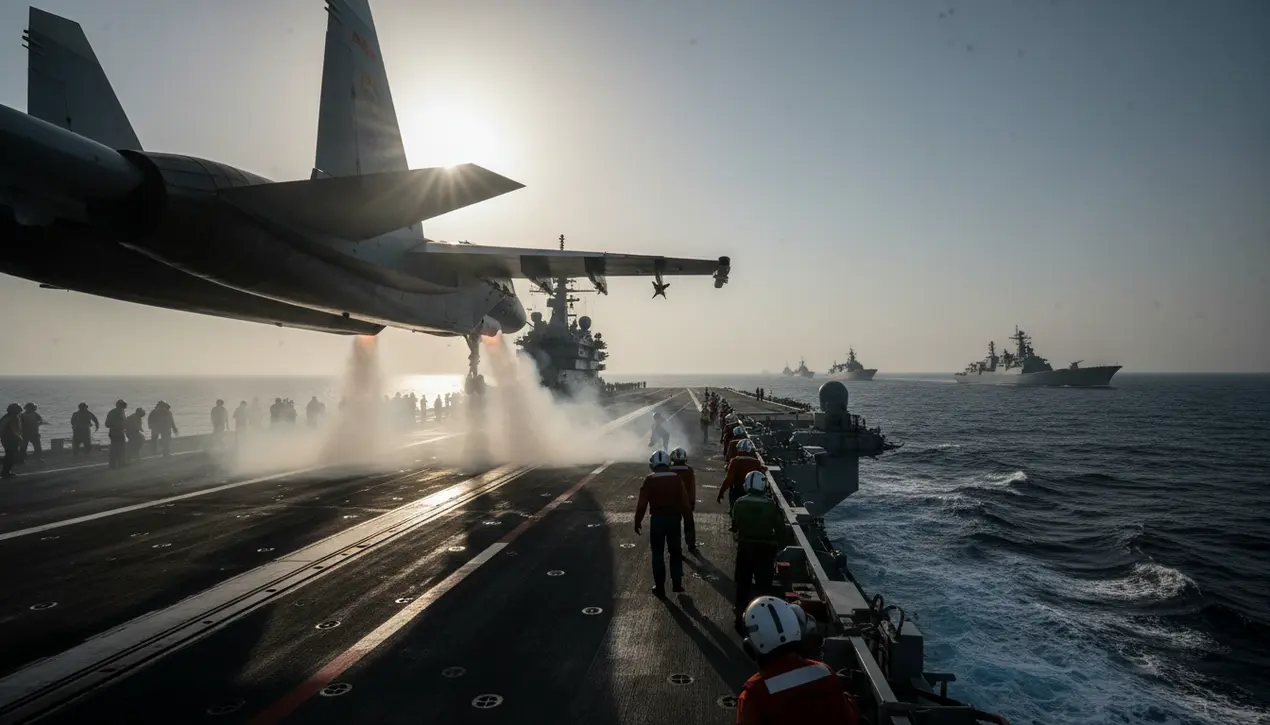
Politicsconflict & defenseMilitary Operations
China's Aircraft Carriers Conduct Combat Drills Beyond Island Chains
OL
Oliver Scott
2 hours ago7 min read1 comments
In a strategic maneuver with profound implications for Pacific power dynamics, China's burgeoning carrier strike groups have conducted intensive combat drills far beyond the island chains that form its traditional defensive perimeter, a clear signal of Beijing's maturing blue-water ambitions. The revelations, detailed in a recent PLA Daily article, peel back the curtain on the previously opaque training regimens of China's three aircraft carriers—the Liaoning, Shandong, and the technologically advanced Fujian.These exercises, characterized by dozens of 'train-as-you-fight' sorties, have significantly ramped up the tempo of aircraft launch and recovery cycles, a critical metric for assessing a carrier's true combat potency. This escalation in operational intensity is not an isolated event but a calculated step in a long-term strategy that mirrors historical naval ascensions, akin to the U.S. Navy's own carrier-dominated doctrine that came to define 20th-century maritime hegemony.The timing is particularly telling, coming less than a fortnight after heightened regional tensions and serving as a live-fire rebuttal to any doubts about China's capacity to project sustained air power into the contested waters of the South China Sea and beyond the strategic choke points of the First Island Chain. Analysts from the Center for Strategic and International Studies note that while the U.S. Navy's carrier groups still possess overwhelming experience and technological depth, the PLA Navy's accelerated learning curve and sheer political will represent a fundamental shift in the regional risk calculus.The persistent focus on operating beyond the first island chain—a geographic arc running from Japan through Taiwan to the Philippines—directly challenges the established security architecture upheld by the United States and its allies, potentially forcing a recalibration of naval assets and alliance commitments from Tokyo to Canberra. The strategic consequence is a Pacific Ocean where freedom of navigation operations and carrier group shadowing become the dangerous norm, increasing the probability of miscalculation.Furthermore, the operationalization of the Fujian, with its electromagnetic catapults, promises a future where Chinese carrier air wings can launch heavier, more heavily armed aircraft, including stealth fighters and early-warning planes, effectively closing a key capability gap. This systematic push into the far seas is a multi-domain endeavor, inevitably coupled with advancements in China's anti-ship ballistic missile arsenal and subsurface fleet, creating an A2/AD (Anti-Access/Area Denial) bubble that complicates external intervention.For Taiwan, these drills are a not-so-subtle rehearsal for potential blockade or coercion scenarios, demonstrating an ever-tightening capacity to enforce control over its air and sea approaches. The broader geopolitical fallout extends to diplomatic corridors in ASEAN, where nations are now faced with a more tangible and immediate manifestation of Chinese naval power, likely accelerating their own defense modernizations and deepening security ties with Quad nations. In essence, these are not mere exercises; they are a declaratory policy, a live demonstration of China's determined transition from a coastal defense force to a global maritime power capable of contesting control of the international commons, thereby setting the stage for a new, more volatile chapter in great power competition at sea.
#China
#aircraft carriers
#military drills
#combat readiness
#featured
#PLA Navy
#island chains
Stay Informed. Act Smarter.
Get weekly highlights, major headlines, and expert insights — then put your knowledge to work in our live prediction markets.
Comments
Loading comments...
© 2025 Outpoll Service LTD. All rights reserved.